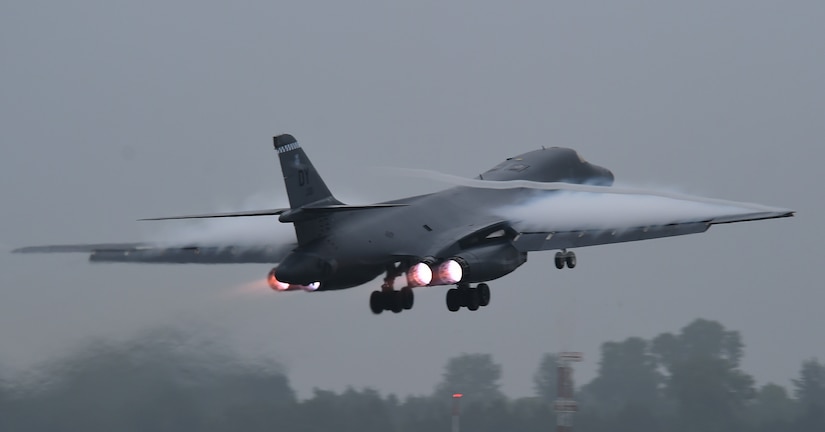By Air Force Senior Airman Emily Copeland, 7th Bomb Wing
ROYAL AIR FORCE FAIRFORD, England -- Two B-1B Lancer bombers
from Dyess Air Force Base, Texas, took part in missions supporting Exercise
Baltic Operations June 4.
The B-1s conducted missions with inert Quickstrike Mark 62
mines, providing U.S. and coalition military forces the opportunity to train
for the laying and recovering of mines. These inert mines are recoverable and
reusable.
“Dropping naval mines gives the B-1 a lot of operational
capability to complete the mission,” said Hojo, a B-1 pilot assigned to the
345th Expeditionary Bomb Squadron.
The pilot’s full name isn’t used due to security concerns.
The B-1 “can quickly deliver large quantities of precision
and nonprecision weapons against any adversary, anywhere in the world, at any
time,” the pilot said.
Annual, Joint, Multinational, Maritime-Focused Exercise
Exercise Baltic Operations, which began in 1972, is an annual
joint, multinational, maritime-focused exercise. It is designed to improve
training value for participants, enhance flexibility and interoperability, and
demonstrate resolve among allied and partner forces in defending the Baltic Sea
region. This year’s exercise commenced June 1 and runs through June 15.
The exercise involves maritime, ground and air forces to
strengthen combined response capabilities necessary to ensure regional
stability.
Training focus areas include air defense, anti-subsurface
warfare, maritime interdiction, mine countermeasures and amphibious operations.
“We train how we fight,” Hojo said. “There is a lot of
behind the scenes to working with mines, from building the munitions to
dropping them on a designated target; you want to make sure that when you are
called upon for a mission, that you can successfully complete the task the
first time when it counts.”
B-1B Lancers support Exercise Baltic Operations
Exercising Key Bomber Capabilities
The inclusion of bombers in this exercise has been long
planned and provides an opportunity for bomber crews to integrate and train
with other U.S. European Command components, while exercising the United
States’ key bomber capabilities. These flights demonstrate the ability of the
U.S. bomber force to provide a credible, flexible, and always-ready capability
to respond to a variety of potential threats and situations, when called to do
so.
These bombers will perform sorties in the Baltic Sea region,
providing support to NATO and partner forces. The exercise will enable the B-1
and its crews to enhance their combat readiness, so collectively NATO can
immediately respond to a range of real-world situations.
Training with allied nations and joint partners improves
coordination between nations and enables the Air Force to build enduring
relationships necessary to confront a broad range of global challenges.
The exercise enhances flexibility and interoperability among
allied and partner nations to strengthen combined response capabilities, as
well as demonstrate international resolve to ensure stability in, and if
necessary defend, the Baltic Sea region.
“We are here to reassure our NATO partners and allies that
we have their back,” Hojo said. “The interoperability is a huge piece to our
part in the exercise, but this is a great opportunity for our unit and everyone
involved to do something they have never done before whether at home or in
theater."









No comments:
Post a Comment